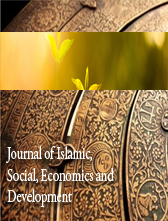PRESSURE ULCERS IN MEDICAL AND SURGICAL WARDS: THE PREVALENCE AND CONTRIBUTING FACTORS OF A SINGLE-CENTRE STUDY
Abstract
Pressure ulcer (PU) is characterised by localised damage to the skin and underlying tissue caused by a combination of pressure and shear forces. Its consequences are severe, frequently resulting in sepsis and death. Despite its importance, extensive investigations on PU prevalence and contributing factors among inpatients in Malaysia are lacking, emphasising intensive care units and the elderly. This study aims to determine the prevalence and contributing factors of PU among inpatients of medical and surgical wards. A cross-sectional design with convenience sampling was utilised, which included 100 patients from medical and surgical wards at a university hospital in Malaysia's peninsular state. A set of questionnaires was adopted from a previous study that comprised sociodemographic background, PU contributing factors, and the Braden Scale pressure ulcer risk assessment, which was then translated to Malay with back translation to English for consistency and pretested before data collection. SPSS version 21.0 was employed for data analysis. The prevalence rate of PU was 31%. The following PU stages were represented in the sample: stage 1, 10%; stage 2, 11%; stage 3, 7%; and stage 4, 3%. Following analysis, a significant relationship was found between PU stages and various factors, including age, BMI, length of hospitalisation, frequency of repositioning, educational attainment, marital status, sensory perception, moisture and activity levels, mobility and nutritional status, and friction or shear exposure, with all p-values less than 0.05. This study clarifies the critical issue of PU among inpatients of medical and surgical wards. The prevalence of PU was notably high, indicating a substantial burden on healthcare providers. The study also highlighted the key determinants of PU, which require further extensive research with a larger sample to enhance the representativeness of results.













